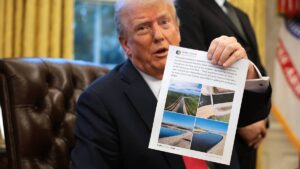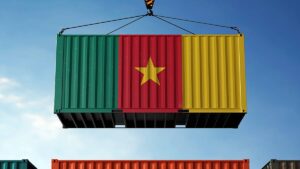Labor promises new land for gold explorers if it wins next month’s Victoria election

Pic: Tyler Stableford / Stone via Getty Images
Victoria’s Labor government took its election pitch to the International Mining and Resources Conference in Melbourne this week, promising miners it will release more land for gold exploration if it retains power.
Victorians are set to head to the polls November 24 and the government is counting on the support of its “booming” resources sector.
“As minister for resources and also as the treasurer of Victoria with one eye very firmly placed on the government’s finances, I am thrilled to say that our resources sector is booming,” Resources Minister Tim Pallas told delegates.
“Quarterly minerals exploration expenditure in Victoria is at its highest level in 10 years and the growth in expenditure is leading the nation.”
Recent Australian Bureau of Statistics data shows mineral exploration expenditure in Victoria rose 33 per cent from March to June, compared to six per cent growth for all of Australia over the same period.
Melbourne is the headquarters for some of the world’s biggest miners – BHP (ASX:BHP), MMG (ASX:MMG), OceanaGold (ASX:OGC), Newcrest Mining (ASX:NCM), Alumina (ASX:AWC), St Barbara (ASX:SBM) and Orica (ASX:ORI), as well as Rio Tinto’s (ASX:RIO) Asia Pacific regional headquarters.
Mr Pallas said if Labor won government it would work on releasing the “much-anticipated Lockington gold area just northeast of Fosterville”.
Lockington is 45km north of the Kirkland Lake Gold’s (ASX:KLA) operating Fosterville mine and 60km northeast of Bendigo.
- Subscribe to our daily newsletter
- Bookmark this link for small cap news
- Join our small cap Facebook group
- Follow us on Facebook or Twitter
At the same time the minister announced he had extended the licences for the Fosterville mine and the private equity owned Stawell mine, which just restarted production, for a further 15 years.
Bendigo produced more than half the world’s gold for 40 years in the late nineteenth century, making it the world’s largest producer between 1850 and 1890.
Kirkland is responsible for putting Bendigo back on the map as a hot gold exploration destination.
The 7-million-ounce Fosterville mine is one of the world’s highest-grade gold mines and is currently the largest gold producer in Victoria.
It is expected to produce 300,000 ounces of gold this year.
“The Global Survey of Victoria has identified that the area around Bendigo, which is about two hours from Melbourne, could hold up to about 32 million ounces of gold,” Mr Pallas said.
“So there’s gold still out there to be found. What was once a free-for-all hunt for gold on the surface, really just scratching at the surface in many ways, is now going deep below the ground with cutting edge technology in Australia’s world-renowned Golden Triangle.”
The State government last week awarded tenements in another mineral-rich province three hours drive northwest from Melbourne known as “Stavely Arc” in Saint Arnaud.
“The Stavely Arc is prospective for gold, copper and other base metals and offers a pipeline of greenfield exploration opportunities,” Mr Pallas said.
Greenfields is exploration done in new areas where mineral deposits have not yet been discovered.
Governments need to accept more risk
Meanwhile, the head of one of the world’s largest mining companies has called for governments to shoulder more of the risk associated with mining if they want more of the profits.
“If the community or government wants a bigger share of the pie, then they need to be willing to take on more of the risk,” Rio Tinto chief Jean-Sebastien Jacques told delegates.
“That is a very important part of our very capital-intensive industry. So there is a need to find new ways of funding mining projects.”
UNLOCK INSIGHTS
Discover the untold stories of emerging ASX stocks.
Daily news and expert analysis, it's free to subscribe.
By proceeding, you confirm you understand that we handle personal information in accordance with our Privacy Policy.








